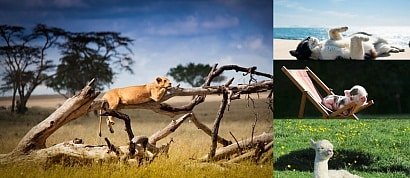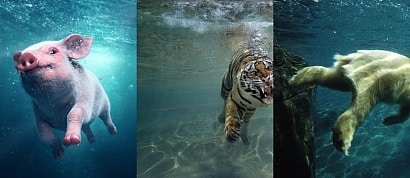A list of my favorite images of glass frogs.
en.wikipedia.org/wiki/Glass_frog
Glass frogs are frogs of the amphibian family Centrolenidae (order Anura).
While the general background coloration of most glass frogs is primarily lime green, the abdominal skin of some members of this family is transparent. The internal viscera, including the heart, liver and gastrointestinal tract, are visible through the skin, hence the common name is given as glass frog.
Glass frogs originated in South America and dispersed multiple times into Central America. The Centrolenidae are a diverse family, distributed from southern Mexico to Panama, and through the Andes from Venezuela and the island of Tobago to Bolivia, with some species in the Amazon and Orinoco River basins, the Guiana Shield region, southeastern Brazil and northern Argentina.
Glass frogs are mostly arboreal. They live along rivers and streams during the breeding season, and are particularly diverse in montane cloud forests of Central and South America, although some species occur also in Amazon and Chocóan rainforest and semi-deciduous forests.
Glass frogs are generally small, ranging from 3 to 7.5 cm (1.2 to 3.0 in) length. They are green in color over most of their bodies, save for the skin along the lower surface of the body, which is transparent,which helps their camouflage.
Glass frogs are similar in appearance to some green frogs of the genus Eleutherodactylus and to some tree frogs of the family Hylidae. However, hylid tree frogs have eyes that face to the side, whilst those of glass frogs face forward.
Some species of green tree frogs (especially juveniles), such as Hyloscirtus palmeri and Hypsiboas pellucens, have the transparent abdominal skin typical of glass frogs, but they also have calcars on the heels, a character not present in any species of the Centrolenidae.
Two members of the glass-frog family Centrolenidae (Centrolenella fleischmanni, C. prosoblepon) and the hylid subfamily Phyllomedusinae (Agalychnis moreletii, Pachymedusa dacnicolor) reflect near-infrared light (700 to 900 nanometers) when examined by infrared color photography. Infrared reflectance may confer adaptive advantage to these arboreal frogs both in thermoregulation and infrared cryptic coloration.
The eggs are usually deposited on the leaves of trees or shrubs hanging over the running water of mountain streams, creeks and small rivers. One species leaves its eggs over stones close to waterfalls.
The method of egg-laying on the leaf varies between species. The males usually call from leaves close to their egg clutches. These eggs are less vulnerable to predators than those laid within water but are affected by the parasitic maggots of some fly species. As a result, some glass frogs show parental care.
In many species, glass frog females brood their eggs during the night the eggs are fertilized, which improves the survival of the eggs, while in almost a third of species, glass frog males stay on guard for much longer periods.
After they hatch, the tadpoles fall into the waters below. The tadpoles are elongated, with powerful tails and low fins, suited for fast-flowing water. Outside of the breeding season, some species live in the canopy.
Added to
42 votes
My Aquatic Animals Collection
(37 lists)list by kathy
Published 9 years, 7 months ago  1 comment
1 comment
 1 comment
1 commentPeople who voted for this also voted for
Luna Lazar ~ Danish Model
Gloria Grahame Best Movies
Flora Robson Films
Felix Bressart Movies
Nelson Eddy & Jeanette MacDonald Movies
Ellen Corby Best Movies
Marjorie Main Partial Filmography
Chauffeur - Movies
Victor McLaglen - Movies
Arthur Kennedy Best Movies
Balcony and Porch Scenes
swiss actress
Pictures Posted by Kandi XIII
Judith Anderson Great Movies
Film Diary of 2023
More lists from kathy
Favorite Images of Clouded Leopards
Celebrity Weddings #2
Animals Sunbathing
Ulrich Tukur Films Viewed by Kathy
Animals in Utah, USA
Animals Swimming Underwater
Favorite Acorn Ornaments
 Login
Login























































